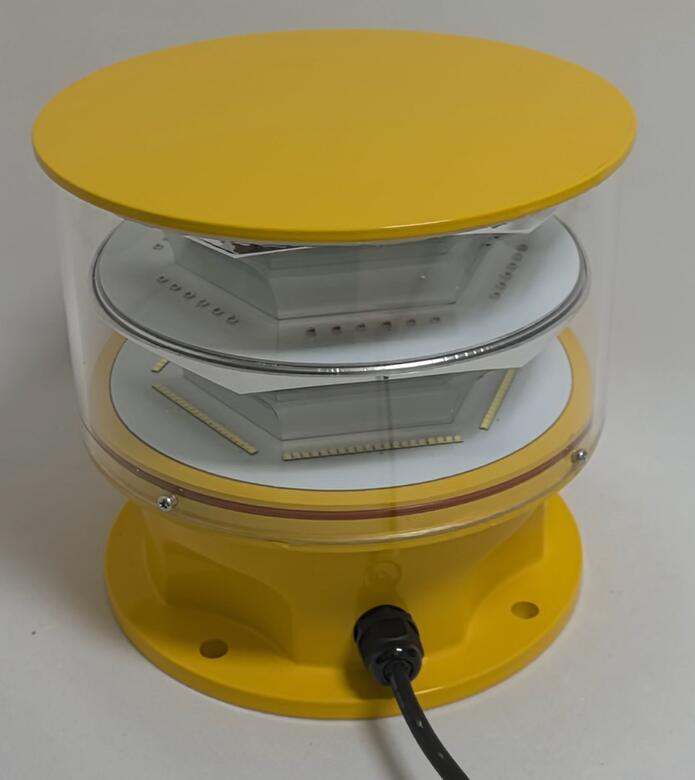As technology advances, traditional obstruction lighting systems are being replaced by modern, energy-efficient solutions. Among these innovations, LED obstruction lighting has emerged as a superior choice for marking hazards to air navigation. From tall towers to wind turbines, LED obstruction lights offer enhanced performance, durability, and compliance with international aviation standards.
What is LED Obstruction Lighting?
LED obstruction lighting refers to a system of lights designed to mark tall structures that pose potential hazards to aircraft. Utilizing Light Emitting Diode (LED) technology, these lights emit high-intensity signals that ensure visibility during both day and night. The lights are essential for structures such as communication towers, wind turbines, high-rise buildings, and industrial chimneys.
Unlike traditional lighting systems that rely on incandescent or halogen bulbs, LED obstruction lights are energy-efficient, environmentally friendly, and offer significantly longer lifespans. They are regulated by international standards set by the Federal Aviation Administration (FAA) and the International Civil Aviation Organization (ICAO), ensuring their effectiveness in diverse environments.

Applications of LED Obstruction Lights
LED obstruction lighting is widely used in various industries, making it a critical component of safety systems.
| LED Obstruction Lights | LED Obstrction Light |
1. Communication and Broadcast Towers
Tall communication towers are equipped with LED obstruction lights to ensure visibility for aircraft. These lights are typically installed at different heights to mark the structure's full profile.
2. Wind Farms
Wind turbines, often located in remote areas, pose risks to low-flying aircraft. LED obstruction lights are used to mark these turbines, ensuring they remain visible from long distances.
3. Urban Infrastructure
Skyscrapers and construction cranes in urban areas rely on LED obstruction lights to guide air traffic safely. Their high visibility reduces the risk of collisions in crowded airspaces.
4. Industrial Sites
Chimneys, cooling towers, and other tall industrial structures utilize LED obstruction lighting to meet aviation safety regulations and prevent potential accidents.
Key Features of LED Obstruction Lighting
The effectiveness of LED obstruction lights lies in their advanced features and capabilities:
Energy Efficiency: LED technology consumes significantly less energy than traditional lighting systems, reducing operational costs.
Durability and Longevity: With lifespans exceeding 50,000 hours, LED obstruction lights minimize the need for frequent replacements.
High Visibility: LED lights offer consistent brightness, ensuring visibility even in adverse weather conditions.
Weather Resistance: Designed to withstand harsh environments, these lights operate reliably in extreme temperatures, heavy rains, and high winds.
Low Maintenance: The robust construction of LED obstruction lights reduces maintenance requirements, making them ideal for remote or difficult-to-access structures.
Environmentally Friendly: LEDs contain no hazardous materials and have a lower carbon footprint, aligning with global sustainability goals.
Benefits of LED Obstruction Lighting
1. Enhanced Safety
LED obstruction lights provide consistent and reliable signals, ensuring that pilots can identify potential hazards and navigate safely. Their superior brightness and visibility make them particularly effective in poor weather or low-light conditions.
2. Cost Savings
The energy efficiency and long lifespan of LED obstruction lights translate into significant cost savings over time. Operators benefit from reduced electricity bills and lower maintenance expenses.
3. Regulatory Compliance
LED obstruction lighting systems are designed to meet international aviation standards, ensuring compliance with FAA and ICAO requirements. This reduces the risk of penalties and enhances overall airspace safety.
4. Versatility
With options for different intensities, colors, and flash patterns, LED obstruction lights can be customized to meet the specific needs of various structures and environments.
Innovations in LED Obstruction Lighting
Technological advancements continue to enhance the capabilities of LED obstruction lights, making them more efficient and adaptable.
1. Solar-Powered Solutions
Many LED obstruction lights now integrate solar panels, making them ideal for off-grid applications. Solar-powered lights are equipped with battery storage, ensuring continuous operation even during extended periods of low sunlight.
2. Smart Monitoring Systems
Modern LED obstruction lights come with remote monitoring features, allowing operators to track performance, detect faults, and schedule maintenance. This reduces downtime and ensures uninterrupted operation.
3. Dynamic Lighting Systems
Some LED obstruction lights are equipped with adaptive brightness controls, allowing them to adjust intensity based on ambient lighting or proximity of aircraft. This innovation enhances energy efficiency while maintaining safety standards.
4. Compact and Lightweight Designs
Advancements in materials and manufacturing processes have led to the development of lighter, more compact LED obstruction lights. These designs simplify installation and reduce structural loads on towers and buildings.
Challenges and Considerations
Despite their advantages, implementing LED obstruction lighting systems comes with a few challenges:
Initial Costs: While LED obstruction lights are cost-effective in the long term, their initial installation can be expensive, particularly for large-scale projects.
Harsh Environments: Extreme weather conditions, such as heavy ice or strong winds, may require additional protective measures to ensure consistent performance.
Regulatory Variations: Different regions have specific standards for obstruction lighting. Ensuring compliance requires careful planning and expert knowledge.
Future Trends for LED Obstruction Lighting
As technology continues to evolve, the future of LED obstruction lighting looks promising. Emerging trends include:
Integration with IoT: LED obstruction lights connected to Internet of Things (IoT) networks will enable real-time monitoring and predictive maintenance.
Improved Battery Technology: Advances in energy storage will enhance the reliability of solar-powered LED lights, particularly in regions with inconsistent sunlight.
Sustainable Materials: The development of eco-friendly materials for LED lights will further reduce their environmental impact.
The LED obstruction lighting system represents a significant advancement in aviation and infrastructure safety. Its energy efficiency, durability, and adaptability make it an ideal solution for marking hazards and complying with international standards. As the industry continues to innovate, LED obstruction lighting will remain a cornerstone of safety systems, contributing to safer skies and more sustainable operations worldwide.